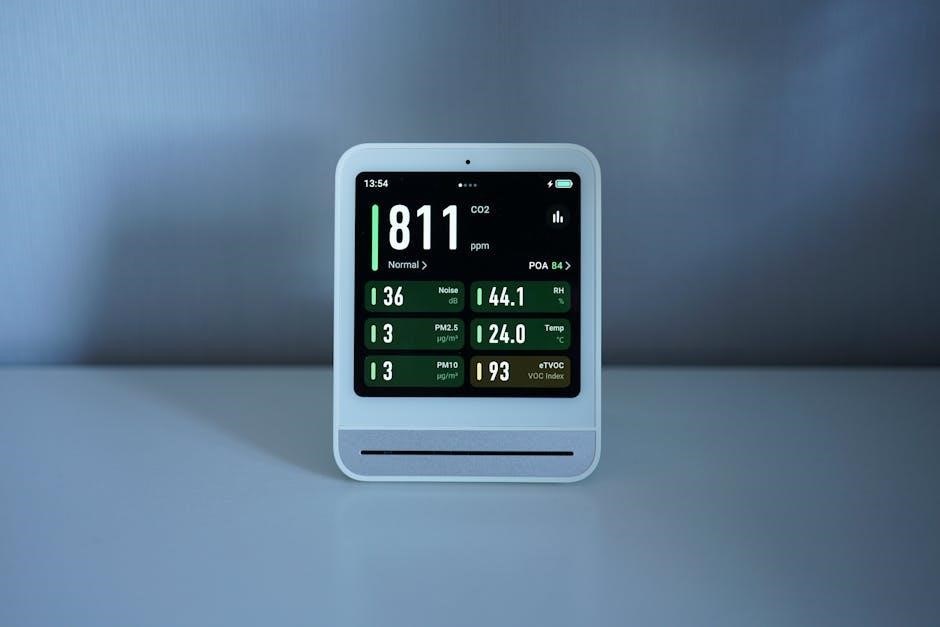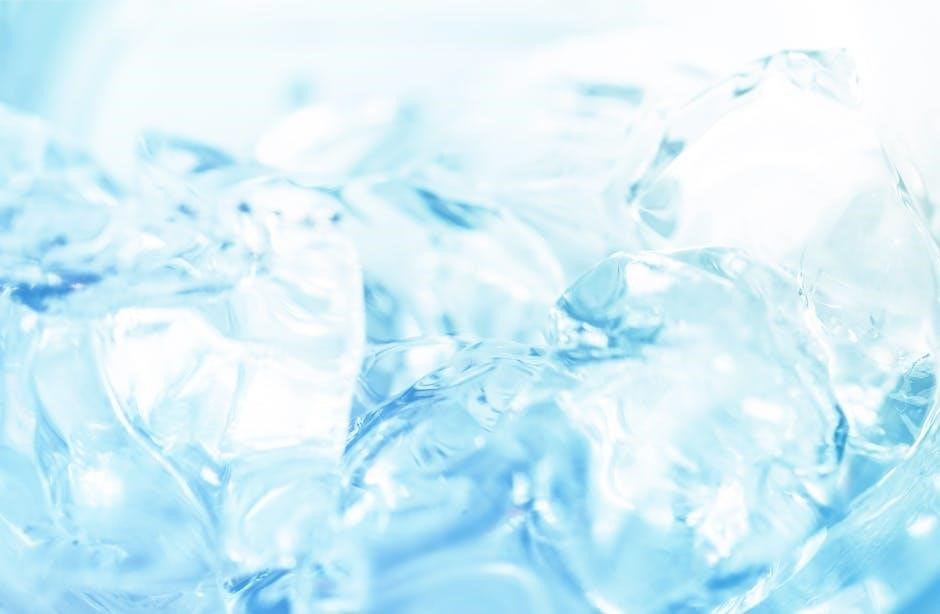
Understanding Blackstone Temperature Control
Mastering temperature control is essential for optimal griddle performance. Accurate heat management ensures perfect searing‚ frying‚ and cooking results. Incorrect temperatures can lead to undercooked or overcooked food.
Importance of Temperature Control in Griddle Cooking
Temperature control is crucial for achieving consistent results in griddle cooking. It ensures that food is cooked evenly‚ preventing hotspots and undercooked areas. Proper heat management allows for perfect searing‚ frying‚ and cooking of delicate foods without burning. For example‚ pancakes require a lower temperature to cook evenly‚ while searing meats demands high heat. Incorrect temperatures can lead to food sticking‚ uneven browning‚ or even safety issues like undercooked meat. Blackstone griddles‚ with their adjustable burners‚ offer precise control‚ enabling users to tailor heat to specific dishes. Understanding how to regulate and maintain the ideal temperature is key to unlocking the full potential of your griddle and delivering professional-grade results every time.
Ideal Temperature Ranges for Different Foods
Understanding the ideal temperature ranges for various foods is key to achieving perfect results on your Blackstone griddle. Pancakes and delicate foods like eggs thrive at lower temperatures‚ typically between 300°F to 350°F‚ to prevent burning. For searing meats‚ such as steak or burgers‚ a high heat of 400°F to 450°F is ideal to create a crispy crust. Hashbrowns and bacon perform well at medium-high heat (375°F to 425°F)‚ ensuring a golden‚ crispy texture. Vegetables like asparagus or bell peppers cook best at medium heat (350°F to 400°F) to retain their color and nutrients. Adjusting the temperature based on the food ensures even cooking‚ prevents overcooking‚ and enhances flavor. This versatility makes the Blackstone griddle a versatile tool for any dish‚ allowing for precise control to suit every recipe.
How to Accurately Measure Surface Temperature
To ensure accurate temperature measurement on your Blackstone griddle‚ consider using an infrared thermometer‚ which offers quick and precise readings without contact. For sustained monitoring‚ an oven thermometer can be placed directly on the griddle surface. Both tools provide reliable data‚ helping you maintain optimal temperatures for various cooking tasks. This dual approach ensures consistency and accuracy‚ essential for achieving the best results in your cooking.
Preheating Your Blackstone Griddle
Preheating ensures even heat distribution and prevents food from sticking. Turn the griddle to low heat‚ let it warm up‚ and use a thermometer to confirm surface temperature.
Step-by-Step Guide to Preheating the Griddle
- Turn off the gas valve and ensure all knobs are in the off position before starting the preheating process.
- Light the burners on low heat to begin warming up the griddle surface slowly and evenly.
- Allow the griddle to heat up for at least 10-15 minutes. This ensures the surface reaches a consistent temperature.
- Use an infrared thermometer to check the surface temperature‚ which should range between 350°F to 400°F for most cooking tasks.
- Adjust the heat as needed to maintain the desired temperature. Once ready‚ the griddle is prepared for cooking.
This method ensures the griddle is properly preheated‚ preventing food from sticking and promoting even cooking.
How to Ensure Even Heat Distribution
- Preheat the griddle thoroughly for 10-15 minutes before cooking to allow the surface to reach a consistent temperature.
- Use a thermometer to monitor surface heat‚ ensuring it stays within the desired range for your recipe.
- Adjust burner heat evenly‚ as uneven flame distribution can cause hotspots on the griddle surface.
- Rotate food or pans periodically to ensure even cooking‚ especially on larger griddles with multiple burners.
Even heat distribution is crucial for consistent cooking results; By preheating properly‚ monitoring temperature‚ and adjusting burners‚ you can avoid hotspots and achieve uniform cooking across the griddle surface.

Cooking Techniques Based on Temperature
Different cooking methods thrive at specific temperatures. High heat is ideal for searing‚ medium heat suits sautéing‚ and low heat is perfect for slow cooking‚ ensuring versatility in your griddle dishes.
Searing and High-Heat Cooking (Medium-High Heat)
For searing and high-heat cooking‚ set your Blackstone griddle to medium-high heat‚ typically between 375°F to 400°F. This range is ideal for achieving a perfect crust on steaks‚ chicken‚ or vegetables. Proper preheating is crucial to ensure even heat distribution. Always use a thermometer to verify surface temperature before cooking. Choose oils with a high smoke point‚ like avocado or grapeseed oil‚ to prevent burning. Avoid overcrowding the griddle‚ as this can lower temperatures and hinder searing. Let meats rest briefly after cooking to retain juices. High heat searing locks in flavors and textures‚ making it a cornerstone of griddle cooking. Practice timing and temperature control to master this technique for restaurant-quality results.
Sautéing and Pan-Frying (Medium Heat)
Sautéing and pan-frying on your Blackstone griddle thrive at medium heat‚ typically between 325°F to 350°F. This range allows for quick cooking while preserving moisture and flavor. Use a small amount of oil with a high smoke point‚ like canola or vegetable oil‚ to prevent burning. Stir ingredients frequently to ensure even cooking. Ideal for vegetables‚ seafood‚ and thinly sliced meats‚ medium heat prevents charring while achieving a tender finish. Avoid overcrowding the griddle to maintain consistent results. Adjust burners as needed to sustain steady heat. This method is perfect for dishes requiring a balance of crispiness and softness. Mastering medium heat sautéing and pan-frying opens up a world of versatile and flavorful recipes for your griddle.
Low-and-Slow Cooking (Low Heat)
Low-and-slow cooking on your Blackstone griddle is perfect for dishes requiring prolonged cooking at lower temperatures‚ typically between 275°F and 300°F. This method is ideal for tenderizing tougher cuts of meat‚ such as brisket or pulled pork‚ while retaining moisture and flavor. Use this setting for simmering sauces‚ braising short ribs‚ or roasting vegetables evenly. To achieve consistent results‚ maintain a steady low heat by adjusting the burners as needed. For added convenience‚ you can cover the griddle with heavy-duty foil to trap heat and promote even cooking. Low-and-slow cooking ensures a deep‚ rich flavor profile and a tender texture‚ making it a versatile technique for a variety of recipes. Regularly monitor the griddle’s surface temperature to avoid overheating and adjust as necessary for optimal results.
Maintaining the Griddle
Regular maintenance ensures your Blackstone griddle performs optimally. Clean it while hot‚ remove stuck-on food with a scraper‚ and season it to prevent rust and enhance non-stick properties.
Cleaning the Griddle After Use
Cleaning your Blackstone griddle after use is crucial for maintaining its performance and longevity. Start by turning the heat to low and allowing the griddle to cool slightly. Use a sturdy scraper or spatula to remove any leftover food particles and debris. For tougher residue‚ add a small amount of water to the surface and let it simmer briefly to loosen the stuck-on bits. Avoid using harsh chemicals or abrasive cleaners‚ as they can damage the seasoning. Instead‚ wipe the griddle clean with paper towels or a soft cloth. Once clean‚ dry the surface thoroughly and apply a thin layer of oil to prevent rust and maintain the seasoning. Regular cleaning ensures your griddle remains in prime condition for future cooking sessions.

Seasoning the Griddle for Optimal Performance
Seasoning your Blackstone griddle is essential for creating a non-stick surface and protecting it from rust. Start by cleansing the griddle thoroughly to remove any residue. Apply a thin‚ even layer of high-temperature oil‚ such as Blackstone Griddle Seasoning & Cast Iron Conditioner or Canola oil‚ using paper towels to spread it evenly. Avoid over-oiling‚ as it can lead to a sticky surface. Place the griddle over medium-low heat and let it cook for about an hour to allow the oil to polymerize and bond with the metal. Repeat this process 2-3 times for a durable seasoning. Regular seasoning ensures optimal performance‚ prevents rust‚ and maintains the griddle’s non-stick properties. Always re-season after deep cleaning or if you notice the surface becoming dull or sticky.

Common Temperature-Related FAQs
Why does the griddle surface temperature vary? This can occur due to uneven heat distribution‚ burner adjustments‚ or environmental factors like wind. Troubleshooting involves checking burner alignment and ensuring proper preheating.
Why Does the Griddle Surface Temperature Vary?
Surface temperature variations on your Blackstone griddle can occur due to several factors. First‚ improper preheating or uneven heat distribution from the burners can lead to hotspots. Environmental conditions‚ such as wind‚ may also disrupt heat consistency. Additionally‚ the griddle’s material and thickness can affect how heat spreads across the surface. Using the correct propane flow and ensuring the burners are properly aligned is crucial. Cleaning residue or food particles can also impact temperature accuracy. Finally‚ inaccurate measurement tools or techniques may misrepresent the actual surface temperature. Addressing these factors ensures a more consistent cooking experience;

Troubleshooting Common Temperature Issues
Experiencing temperature issues with your Blackstone griddle? Start by checking for uneven heating‚ which can result from improper burner alignment or food residue. Low heat output may stem from insufficient propane flow or incorrect burner settings. Overheating often occurs due to unattended cooking or excessive oil use. To address these‚ ensure the griddle is clean and level‚ as residue and tilt can disrupt heat distribution. Adjust burner knobs to maintain consistent temperatures and avoid extreme settings. For persistent issues‚ inspect the propane tank’s connection and ensure proper gas flow. Regular seasoning and maintenance also play a role in preventing temperature fluctuations. By addressing these factors‚ you can restore optimal performance and achieve consistent cooking results.